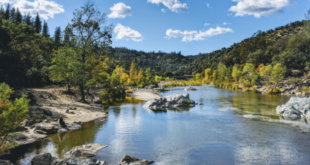Californians are intimately familiar with the Richter scale, the gauge for measuring an earthquake’s magnitude based on its seismic movement. Additionally, an earthquake early warning system is being refined to provide the rapid detection of earthquakes, real-time assessment of the shaking hazard, and, hopefully, the notification of people prior to the shaking.
Residents of the East Coast and the Deep South stretching west to Texas have the National Hurricane Center (NHC) for tracking and predicting tropical weather systems. Thanks to the NHC, residents and businesses in hurricane country typically have several days to prepare for what can be a deadly storm whether that be to board up buildings or leave it all behind and evacuate to safer ground.
But what about the atmospheric storms, the more recent and much-discussed phenomenon that has caused millions of dollars of damage to homes and businesses, caused people to flee and/or evacuate flooding much like hurricane victims and was a major contributor to the 2017 Oroville Dam disaster? Though not just a California problem, the phenomenon appears most frequently and intensely in the Golden State and then loses steam as it moves inland.
Dr. Marty Ralph, director at the Center for Western Weather and Water Extremes, Scripps Institution of Oceanography at the University of California San Diego, recently addressed some 275 guests at the 13th Annual San Bernardino County Water Conference. He shared the news of an atmospheric scale in development to predict a myriad of details about coming atmospheric rivers (ARs).
Dr. Ralph acknowledged that, “there’s no silver bullet for forecasting ARs but we’re working to understand the physics, observations and modeling of the phenomenon. California has the greatest variability of annual precipitation in the United States.” But he also noted that, “We have the tools to manage this variability.”
In brief, Dr. Ralph told KQED Science (San Francisco) earlier this year that ARs are, “Giant rivers of water vapor in the sky with strong winds pushing them along. They’re the biggest freshwater rivers on Earth.” KQED further described them as typically 300 miles wide, a mile deep and more than 1,000 miles long. Additionally they can be fast and packed with moisture, behave erratically and change direction unpredictably.
According to Dr. Ralph the top five percent of storms – those with the most precipitation are ARs – and they can make or break California’s water years and whether the state faces yet another drought. Averages indicate that Southern California receives 30 to 40 percent of its precipitation from ARs; Northern California gets 40 to 50 percent of its precipitation from ARs. On the flip side, ARs drive flood losses with some 84 percent of insured losses in the 11 western states being caused by ARs.
But now Dr. Ralph and his team are turning their attention to forecasting ARs and its many characteristics. With a scale of one to five (low to high) — much like a hurricane’s measurement — will measure the intensity of an AR (is it a big one?), how long it will last thereby helping to better predict flooding, the strength of the storm and to serve as a predictive indicator of the storm’s damage. The team is also working to better predict the day and time of landfall as well as the possibility of the AR stalling in a specific area as was the case in the Oroville Dam disaster.
In order to better predict and improve forecasting Dr. Ralph contends that researchers need better weather observations over the Pacific. This is now underway through aircraft reconnaissance using “borrowed” hurricane aircraft and tools during their “off” season. Also, a new Forecast-Informed Reservoir Operation (FIRO) concept method is in use to potentially aid water storage and flood control liability. The FIRO concept is currently in use with Prado Dam in Riverside County and the Orange County Water District.
Whereas Dr. Ralph notes that his research and that of his team are still being refined — much like the earthquake early warning system – the current ability to predict ARs two weeks out is not good, one week out is sometimes good and two days out have good odds.
“Atmospheric rivers have been around forever,” said the noted researcher. “We’re tilting the odds and we’re learning how to predict these storms.”
 California Water News Daily Your Source For Water News in California
California Water News Daily Your Source For Water News in California


